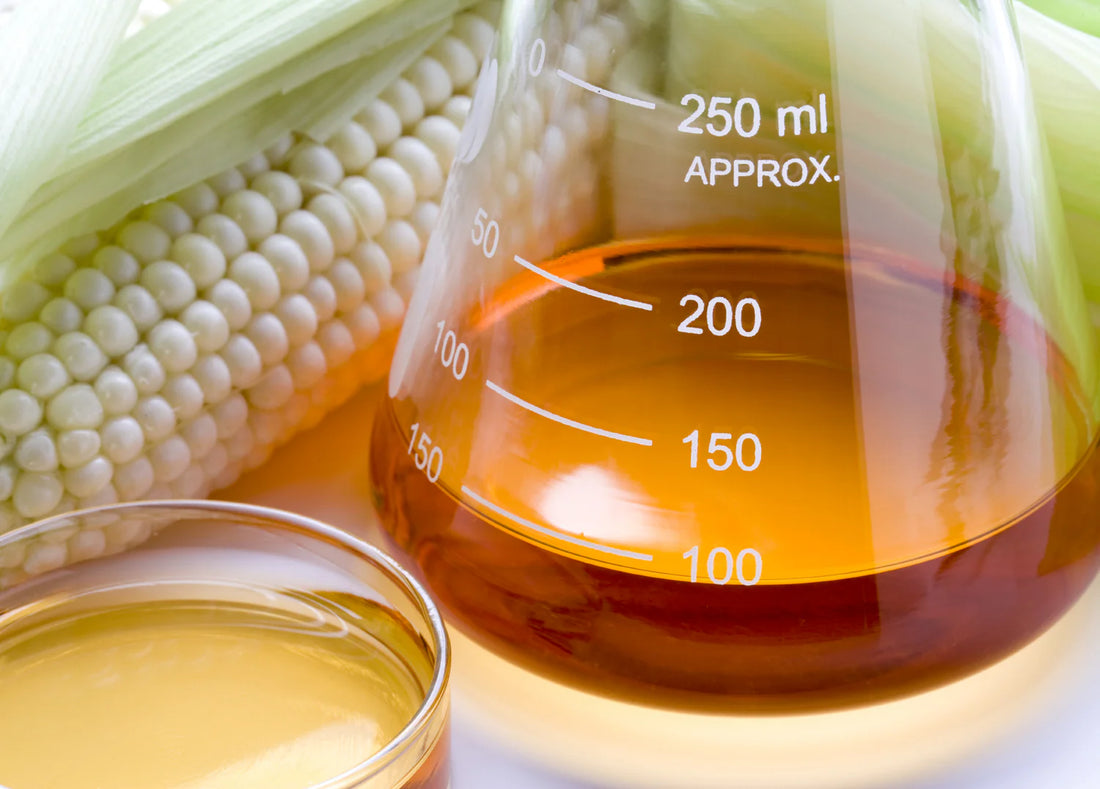
The Not So Sweet Truth About High Fructose Corn Syrup: Why It's Bad for Your Health and Why We Avoid It
In the world of processed foods, High Fructose Corn Syrup (HFCS) is one of the most common ingredients you’ll find on grocery store shelves. From sodas to cereals, snacks to sauces, this cheap and sweet additive is everywhere. But just because it's common doesn’t mean it’s good for you. In fact, HFCS has sparked significant concern due to its potential impact on our health.
In this blog post, we’ll explore what HFCS is, why it’s used, the dangers it poses, and why Permissibles refuses to include it in any of our products.
What is High Fructose Corn Syrup?
High Fructose Corn Syrup is a liquid sweetener made from corn starch that has been processed to convert some of its glucose into fructose, a type of sugar. It became popular in the 1970s when food manufacturers discovered that HFCS was cheaper to produce than traditional sugar (sucrose), thanks to subsidies on corn and advancements in food processing technology.
HFCS comes in different varieties, such as HFCS-55 (used in soft drinks) and HFCS-42 (used in processed foods and baked goods). It has a similar sweetness to table sugar, but its composition of glucose and fructose differs slightly.
Why is High Fructose Corn Syrup Used?
- Cost-Effective: HFCS is cheaper than cane sugar, making it a cost-saving alternative for manufacturers.
- Extended Shelf Life: It helps preserve processed foods, allowing them to stay fresh longer on grocery store shelves.
- Enhances Flavor: It provides a consistent sweetness that enhances the flavor of many foods and drinks.
- Improves Texture: In baked goods, HFCS can help retain moisture, giving products a soft, chewy texture.
- Stability in Liquid Form: HFCS remains stable in liquid form, making it a popular sweetener for beverages and syrups.
The Dangers of High Fructose Corn Syrup
Obesity and Weight Gain
One of the biggest concerns with HFCS is its potential link to obesity. Unlike glucose, which is processed by every cell in the body, fructose is primarily processed by the liver. Overconsumption of fructose can overwhelm the liver, leading to fat buildup and an increase in visceral fat (fat around internal organs). Studies have shown that diets high in HFCS can contribute to weight gain and obesity, particularly when consumed in sugary drinks and snacks.
Increased Risk of Metabolic Syndrome
HFCS consumption has been associated with metabolic syndrome—a cluster of conditions that include increased blood pressure, high blood sugar, excess body fat around the waist, and abnormal cholesterol levels. These conditions elevate the risk of developing heart disease, type 2 diabetes, and stroke.
Liver Damage
Since fructose is metabolized in the liver, excessive consumption of HFCS can lead to non-alcoholic fatty liver disease (NAFLD). This condition occurs when fat builds up in the liver, potentially leading to inflammation and scarring, which can impair liver function over time.
Insulin Resistance and Type 2 Diabetes
Consuming large amounts of HFCS can lead to insulin resistance, a condition where the body’s cells don’t respond properly to insulin. This can result in high blood sugar levels and an increased risk of developing type 2 diabetes. The high levels of fructose in HFCS have been found to have a negative impact on the body’s ability to regulate blood sugar effectively.
Increased Appetite
Unlike glucose, which triggers a feeling of fullness, fructose doesn’t effectively signal to the brain that you're satisfied. This can lead to overeating, as your body doesn’t register when you’ve had enough calories, potentially contributing to weight gain and other health problems.
Addiction-like Effects
Some studies suggest that HFCS and other added sugars may have addiction-like effects on the brain. Similar to how certain drugs affect the brain’s reward system, consuming HFCS can cause cravings and a cycle of overeating sugary foods, making it difficult to maintain a balanced diet.
High Fructose Corn Syrup and Global Regulations
While HFCS is widely used in the United States, many countries have taken a more cautious approach to its consumption.
- European Union: The EU has strict quotas on the production of HFCS, limiting its use in food products.
- Mexico: In recent years, Mexico has reduced its use of HFCS in soft drinks, opting for sugar-based sweeteners instead.
- Canada: HFCS is less commonly used in Canada compared to the U.S., with some food manufacturers choosing to avoid it altogether.
Despite these concerns, HFCS continues to be prevalent in the U.S. due to its affordability and long shelf life. However, many consumers are now becoming aware of its risks and looking for alternatives.
Permissibles’ Commitment: No High Fructose Corn Syrup
At Permissibles, we believe in using clean, natural ingredients that nourish the body and support good health. That’s why you’ll never find high fructose corn syrup in any of our products. We choose wholesome, real ingredients that deliver delicious flavor without compromising your health.
Conclusion
High Fructose Corn Syrup may be cheap and convenient for food manufacturers, but its potential impact on your health is far from sweet. Linked to obesity, liver damage, diabetes, and other serious health conditions, HFCS is an ingredient best avoided. At Permissibles, we prioritize your well-being by leaving out artificial and harmful ingredients like HFCS. We’re committed to bringing you natural, clean foods that you can feel good about eating.